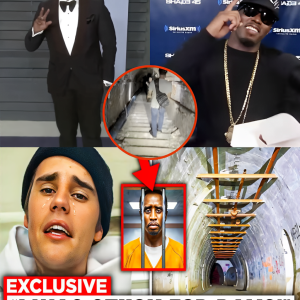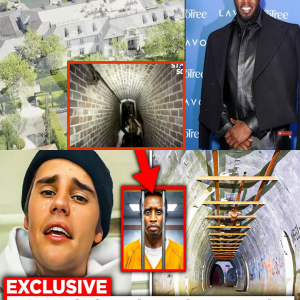WASHINGTON – A furious final sprint in this year’s historic presidential election will begin on Labor Day, as the two major parties’ campaigns dig in for a pitched battle in a handful of swing states that will determine the outcome.
After a shocking series of events, which began with a historically early general election debate at the end of June and ended with the sitting president dropping out of the race in late July, the contest between former President Donald Trump and Vice President Kamala Harris is coming into focus.
Harris is casting herself as a forward-looking consensus builder, while Trump tries to portray her as extremely liberal. The ex-president has also launched a bevy of insults at Harris and assailed her for flip-flopping on fracking and border security, even as he has reversed himself on a number of issues in the campaign, including immigration visas, cryptocurrency, electric vehicles, banning TikTok and Florida’s abortion rights ballot initiative.
Trump is meanwhile telling voters that he’d prevent foreign wars, as Harris chastises him for comments he made last year about acting like a dictator on the first day of his administration. Harris told her supporters last week in Savannah that after a recent Supreme Court ruling, Trump would effectively be immune from prosecution no matter what he does in the White House.
A brief period of respite before the busy season settled over both campaigns ahead of the upcoming push.
Following several hurried days on the trail, which saw him visit Michigan, Wisconsin and Pennsylvania in quick succession, Trump and his running mate, Ohio Sen. JD Vance, took the weekend off from campaigning.
Harris and her running mate, Minnesota Gov. Tim Walz, did the same on Saturday and Sunday. The pair visited Georgia at the end of August. They’ll hit the same battleground states that Trump did last week in a series of campaign stops on Monday.
For Harris, it’s a visit to the labor-heavy city of Detroit and on to Pittsburgh, where she’ll hold her first joint campaign event with President Joe Biden since he left the Democratic ticket. Walz will be in Milwaukee.
Then, it will be up to the vice presidential picks and top campaign surrogates to do the heavy lifting for several days, as Trump and Harris prepare for a consequential face-off.
The candidates are expected to meet for the first time on Sept. 10 at a debate hosted by ABC News in Philadelphia, even though a potentially deal-breaking dispute over whether the mics will be muted in between turns has continued.
Both have reasons to debate. Trump has been slipping in the polls; Harris is still introducing herself to voters.
Labor Day weekend has typically served as the symbolic start to the general election, with campaigns shifting their task from voter registration to voter persuasion, and, eventually, voter turnout operations.
With polls showing tight contests in the swing states, all three efforts could be critical.
The swing states in 2024 are generally considered to be Arizona, Michigan, Nevada, North Carolina, Wisconsin and Pennsylvania. Although Republicans have also said they will contest Minnesota and Virginia, neither are considered toss-ups, and now that Harris and Walz are on the ticket, Democrats’ numbers are improving in the blue-leaning states.
Voting will begin soon in some of those states as absentee ballots begin to go out in Arizona, Michigan, Pennsylvania and Wisconsin this month. North Carolina will start sending its absentee ballots on Sept. 6. Early voting begins in September in four states, including Minnesota and Virginia.
For both campaigns, it’s the Blue Wall
Pennsylvania and its 19 electoral votes are viewed as essential to both campaigns’ paths to victory, although both sides are mapping alternative routes.
Vance and Trump each went to Pennsylvania last week. Harris visited on two separate occasions in August and is sending Walz this Thursday and Friday.
Harris on her most recent trip went with Walz and their spouses to the western part of the state. They landed in Pittsburgh and took a bus tour through deep-blue Allegheny County into the more rural Beaver County, which Trump won, on the eve of the Democratic National Convention.
The approach is one that Harris’ campaign intends to build on, with bus tours that go beyond the major cities, in other battleground states.
“You have to hold the margins in counties you might lose a bit. Lose, you know, 60-40 instead of 70-30 for example,” Dan Kanninen, battleground states director of the Harris-Walz campaign, said. “You want to go expand the gains that Democrats have made in the suburbs with independents and moderate Republicans on issues like abortion or on January 6.”
Trump has ramped up his campaigning in recent weeks to try to blunt Harris’ momentum, blanketing the battleground states with rallies and other appearances.
He held events every day during the Democratic nominating convention in Chicago, crisscrossing the country. In addition to Pennsylvania, Trump made two appearances last week in Michigan and one in Wisconsin.
The three so-called “Blue Wall” states were Democratic bulwarks for decades, until Trump won them in 2016 on his way to winning the presidency.
Biden got them back in 2020, and now the Trump and Harris campaigns are engaged in a struggle. The states represent the easiest pathway to victory for Harris, even as her campaign touts another route through a group of western and southern states that includes Georgia and North Carolina and is known as the Sun Belt.
Harris has a slight lead in all three Rust Belt states, according to the Real Clear Politics polling average, but is trailing slightly or tied in the southern battlegrounds.
She has closed the gap with Trump and turned Pennsylvania into a statistical tie.
“What I think Vice President Harris and Gov. Walz have done really effectively is build the coalition back together,” Pennsylvania Gov. Josh Shapiro told reporters during a roundtable hosted by Bloomberg News during the Democratic convention.





